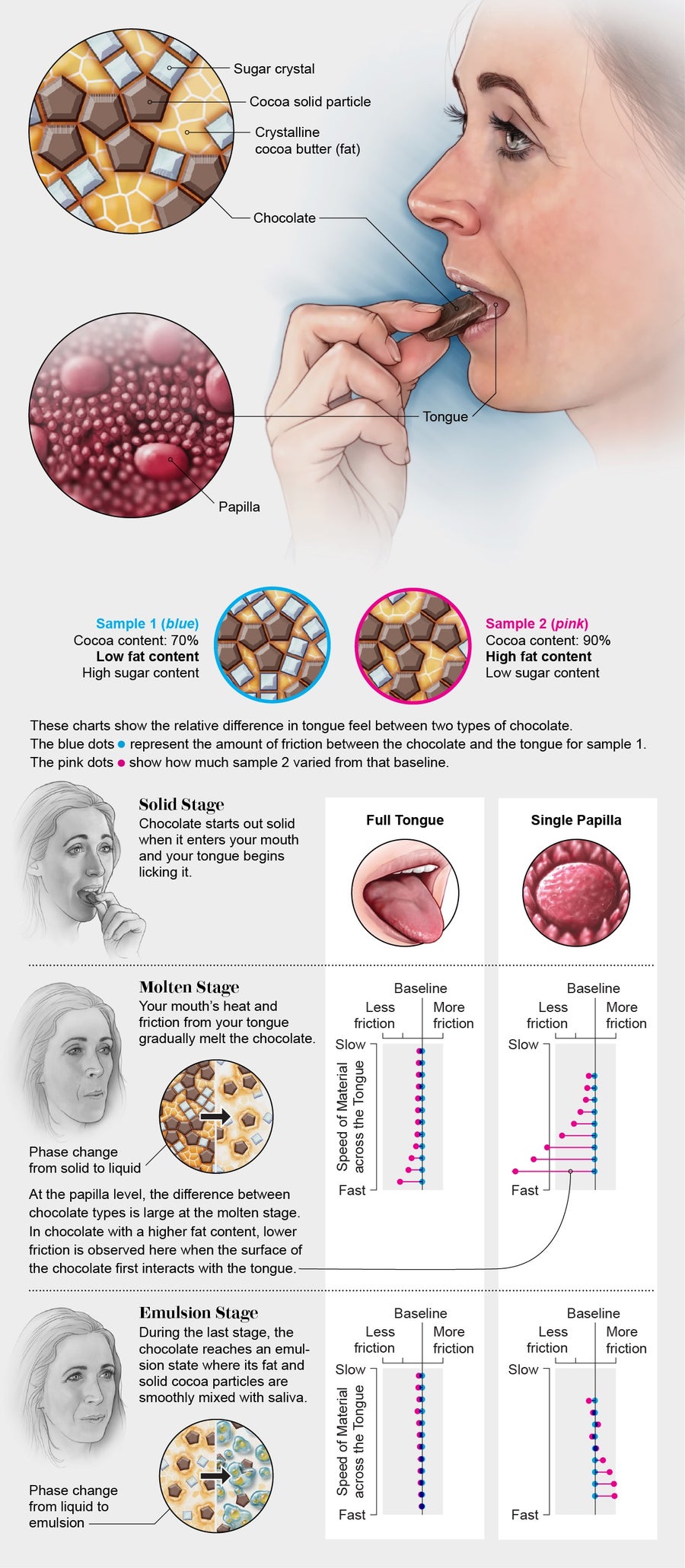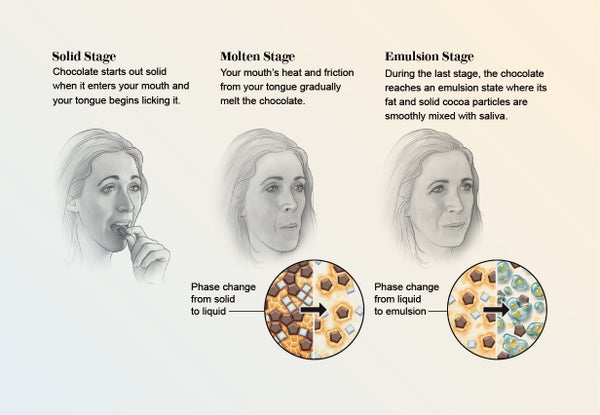On supporting science journalism
If you're enjoying this article, consider supporting our award-winning journalism by subscribing. By purchasing a subscription you are helping to ensure the future of impactful stories about the discoveries and ideas shaping our world today.
The sensation of rich chocolate going gooey on your tongue is unlike any other. To understand how the process plays out on a molecular level, scientists created a biomimetic tongue that replicates the texture, surface distribution and mechanical properties of a human tongue. “We wanted to understand the main contributor to that smooth feeling of the chocolate as it melts,” says Siavash Soltanahmadi, a researcher at the University of Leeds in England. He and his collaborators, Anwesha Sarkar and Michael Bryant, placed chocolate on their ersatz tongue, then observed as the surfaces interacted. Their measurements allowed them to break down the chocolate-eating process into three stages: solid, molten and emulsion. The scientists discovered that the delectable feeling of chocolate depends on the snack releasing a fatty film that coats the tongue. “Where the fat is located in the chocolate is more important than how much of the fat we have,” Soltanahmadi says. This discovery suggests that by putting fat in the top layers of chocolate's surface and reducing fat in its interior, chefs could make a healthier treat that feels just as good in the mouth.

Credit: David Cheney (illustration) and Jen Christiansen (charts); Source: “Insights into the Multiscale Lubrication Mechanism of Edible Phase Change Materials,” by Siavash Soltanahmadi, Michael Bryant and Anwesha Sarkar, in ACS Applied Materials & Interfaces, Vol. 15; January 12, 2023 (data)
